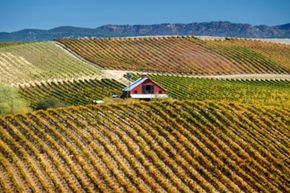Looking at the world of wine from a 21st-century perspective, it's easy to forget that American wines (for this piece we're limiting that to U.S. wines), are relative newcomers. A few of us may still have bellbottoms in our closets from the 1970s. In wine time, that barely registers on the glorious grape-making scale when compared to wine crafting titans like France and Italy. In that short time, though, the number of wineries in the U.S. has grown from 200 to 4,000. There are wineries and vineyards in all 50 states -- even Hawaii and Alaska. Where Americans may have been largely wine neophytes 30 years ago, that's changing, too. Americans make great wine these days, and we also consume wine in large quantities. In 2010, the U.S. surpassed France as the No. 1 wine consumer worldwide.
We could wax poetical about the special allure of wine, its history and its ability to transform an occasion into an event. The simpler truth here, though, is that wine is a big business that's getting bigger every year. The U.S. isn't the only country that's entered the winemaking industry in a big way, either. Countries like Australia and Argentina that wouldn't have registered on any wine aficionado's radar a few decades ago both made it into the 2009 top 10 list of wine producing countries.
Advertisement
Advances in the science of grape cultivation and specialized grape varieties designed to thrive in specific microclimates are making it easier to grow superior grapes in challenging landscapes. Deft winemakers have also developed a sophisticated understanding of the changing tastes of the international wine-drinking community. When you add to that the potential revenue presented by emerging markets like China, wine and winemaking becomes art, craft, science and commerce all matured and bottled into one tantalizingly delicious package.
Let's take a closer look at regional American wines from sea to shining sea. They represent a fascinating mix of ingenuity and an abiding desire to create the finest wines on Earth.
Advertisement
